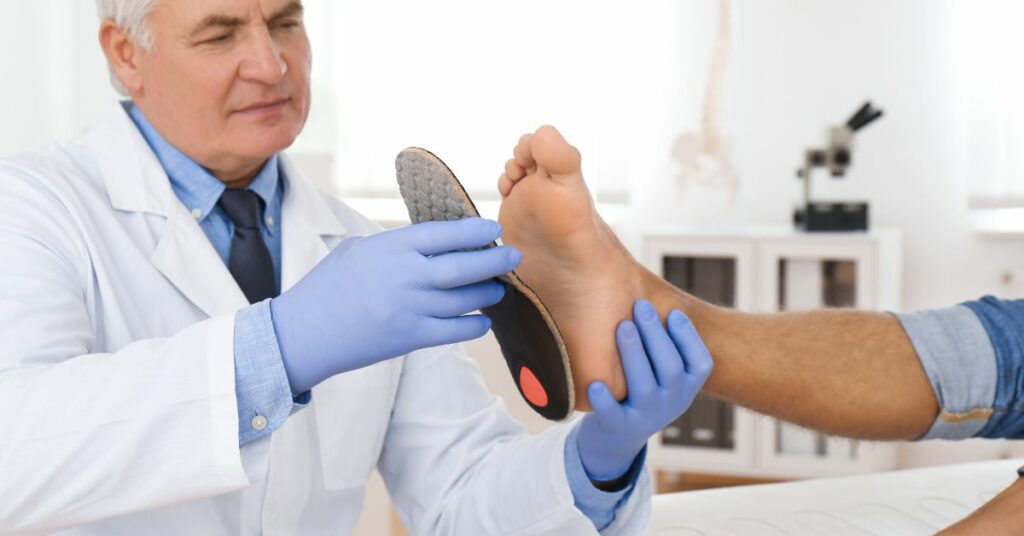Do you feel that your feet no longer provide the support they once did? Sagging feet, also known as flat feet, are a common problem among many people. Fortunately, there are plenty of ways to address this. In this guide, you will find comprehensive information about sagging feet, from causes and symptoms to possible treatments.
What are sagging feet?
Sagged feet, often referred to as flat feet, can be recognized by changes in the structure of the foot. These changes can lead to various complaints and discomforts.
Symptoms of Sagging Feet
Before delving deeper into the specific symptoms, it is important to know how they may manifest:
- Reduced Foot Arch: The most prominent feature of sagging feet is the decrease or disappearance of the natural arch of the foot.
- Pain in the Sole Cavity: This symptom ranges from mild discomfort to persistent pain, especially after prolonged standing or intense walking.
- Callus formation : Calluses can form as a result of altered pressure distribution on the feet, leading to thickening of the skin in certain areas.
- Fatigue and Stiffness: These symptoms are not limited to the feet, but can radiate to the knees and hips.
- Corn : These are hard, painful spots on the foot, often caused by persistent pressure and friction.
- Overpronation Foot : A walking pattern in which the foot tilts too much inward while walking, often a result of sagging feet.
- Sagged Forefoot: This specifically involves the front part of the foot collapsing, which puts extra pressure on the toes and ball of the foot.
- Hammer toes : A deformation of the toes in which they are bent or curved, often as a result of sagging feet.

Causes of flat feet
The causes of flat feet are diverse and it is important to understand them:
- Congenital Anomaly: Some people are naturally more likely to develop flat feet.
- Prolonged Standing: This can overstress the muscles and ligaments in your feet, eventually leading to the collapse of the arch of the foot.
- Bad Shoes: Shoes that provide insufficient support and cushioning can exacerbate or even cause the problem.
Treatment of Sagging Feet
There are several treatments available to relieve the symptoms of sagging feet:
- Orthotics: These insoles are specifically designed to support the arch of the foot and can provide great relief from pain and discomfort.
- Proper Shoes: Choosing shoes that fit well and provide proper support is essential to the well-being of your feet.
- Podiatrist Visits: A specialist can provide you with professional advice and a customized treatment plan.
Prevention and Care
Prevention of sagging feet is just as important as treatment:
- Good Shoe Choice: Invest in good quality shoes that give your feet proper support.
- Watch Your Posture: Correct posture while standing and walking can prevent many foot problems.
Conclusion
Sagging feet can be a source of discomfort and pain, but with proper care and attention, you can prevent or alleviate many problems. Pay close attention to your body’s signals and call in a specialist promptly in case of persistent pain or discomfort. With the right approach, you can continue to live an active and comfortable life!
